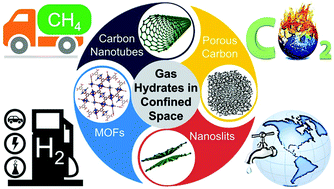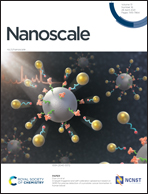Gas hydrates in confined space of nanoporous materials: new frontier in gas storage technology
Abstract
Gas hydrates (clathrate hydrates, clathrates, or hydrates) are crystalline inclusion compounds composed of water and gas molecules. Methane hydrates, the most well-known gas hydrates, are considered a menace in flow assurance. However, they have also been hailed as an alternative energy resource because of their high methane storage capacity. Since the formation of gas hydrates generally requires extreme conditions, developing porous material hosts to synthesize gas hydrates with less-demanding constraints is a topic of great interest to the materials and energy science communities. Though reports of modeling and experimental analysis of bulk gas hydrates are plentiful in the literature, reliable phase data for gas hydrates within confined spaces of nanoporous media have been sporadic. This review examines recent studies of both experiments and theoretical modeling of gas hydrates within four categories of nanoporous material hosts that include porous carbons, metal–organic frameworks, graphene nanoslits, and carbon nanotubes. We identify challenges associated with these porous systems and discuss the prospects of gas hydrates in confined space for potential applications.

- This article is part of the themed collection: Recent Review Articles


 Please wait while we load your content...
Please wait while we load your content...